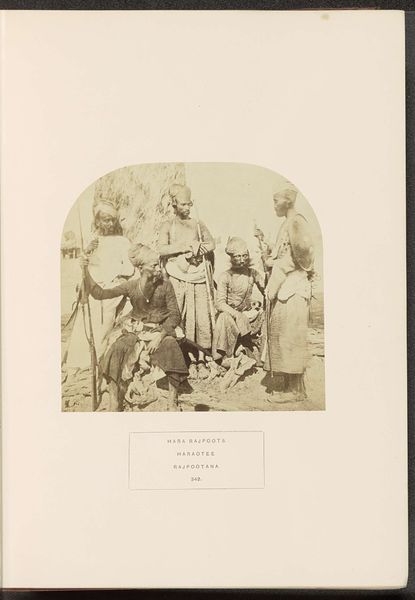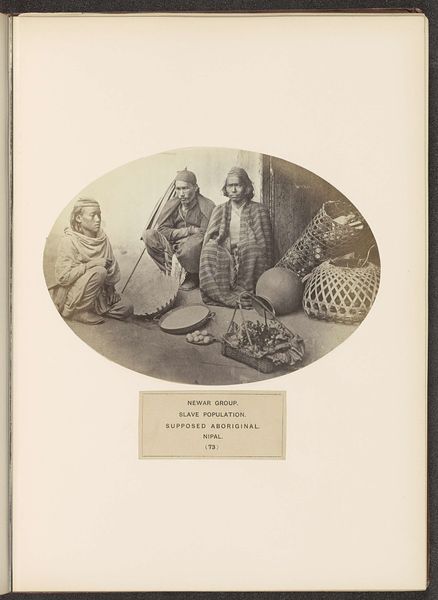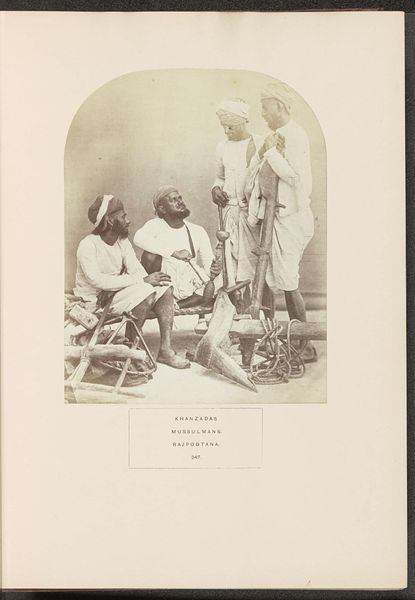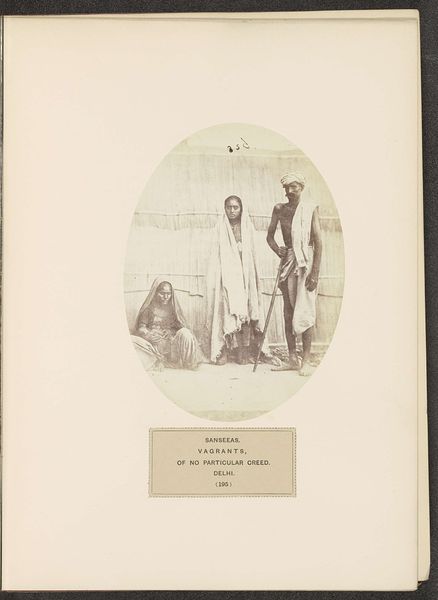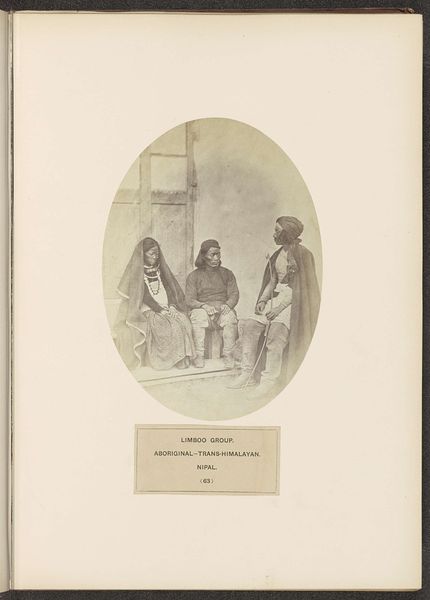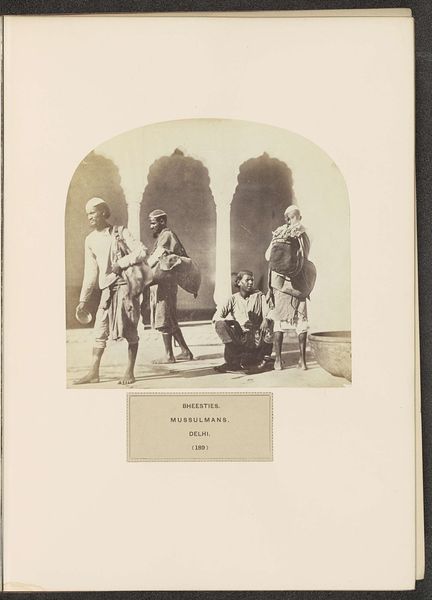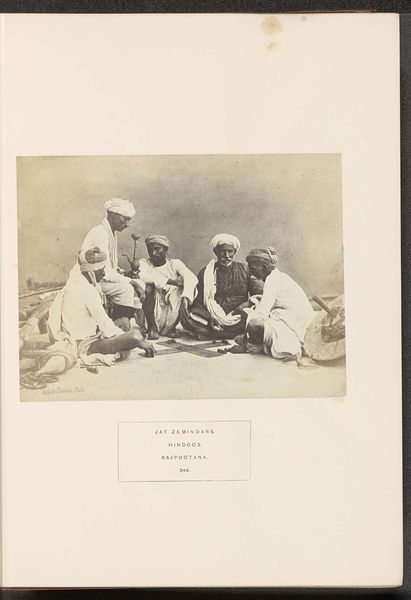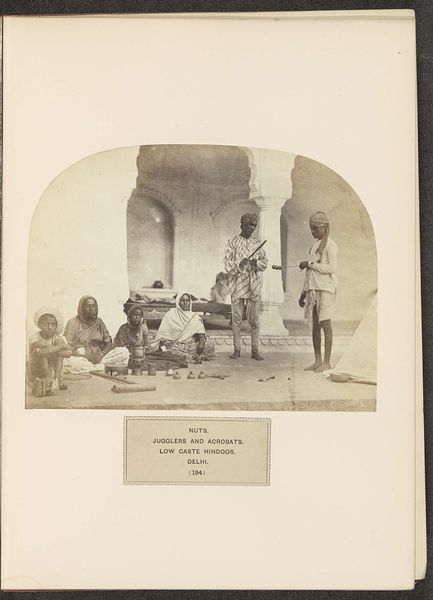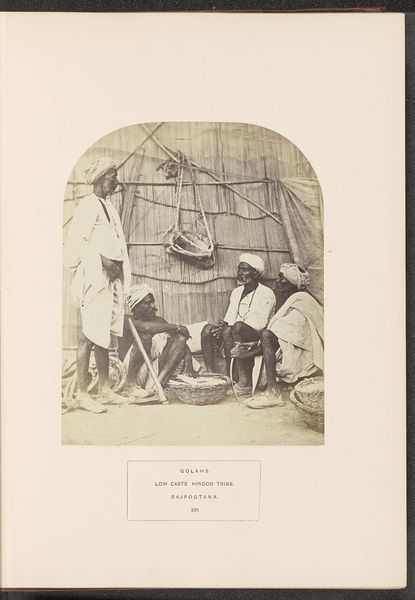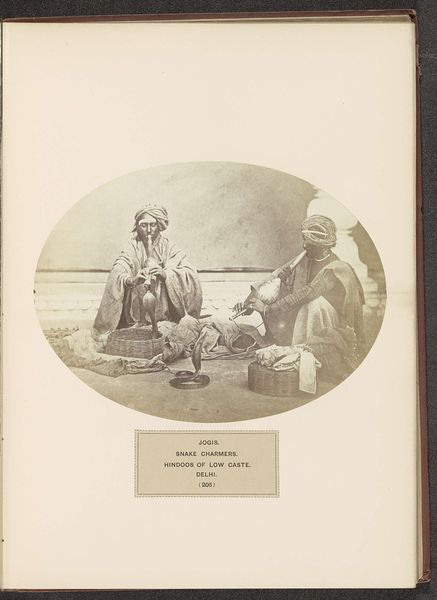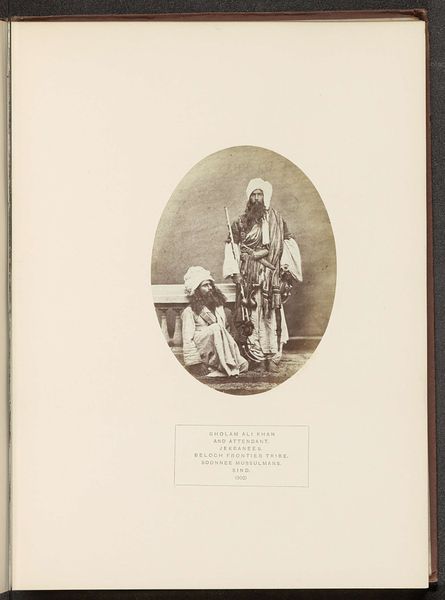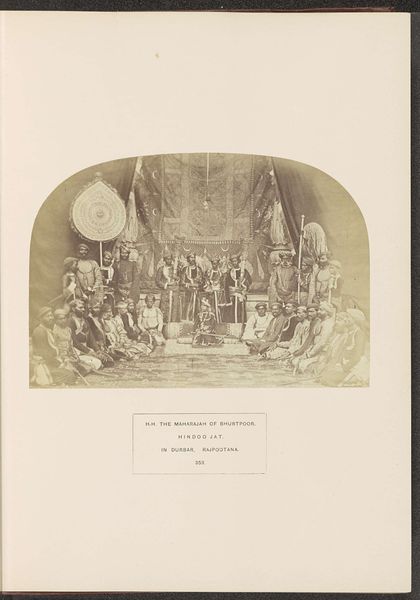
photography
#
portrait
#
pen illustration
#
pen sketch
#
indigenism
#
photography
#
personal sketchbook
#
ink drawing experimentation
#
ancient-mediterranean
#
pen-ink sketch
#
thin linework
#
orientalism
#
pen work
#
sketchbook drawing
#
storyboard and sketchbook work
#
sketchbook art
Dimensions: height 140 mm, width 181 mm
Copyright: Rijks Museum: Open Domain
Curator: This fascinating photographic print is titled "Portret van drie edelmannen of aristocraten met een bediende," which translates to "Portrait of three noblemen or aristocrats with a servant." Shepherd & Robertson are credited with creating this image, likely before 1874. Editor: My first impression? There's a profound stillness here. An almost theatrical sense of formality, but also a compelling sense of lived history emanating from these figures. It's sepia-toned, like an old memory brought to life. Curator: Precisely! This photograph is a window into a very specific social stratum in colonial India, highlighting power dynamics. The arrangement of the three noblemen seated prominently, each holding a sword and wearing distinctively ornate clothing immediately speaks to their privileged status. We can interpret the attendant on the left, almost fading into the background, as embodying the quiet subservience integral to the power of these men. Editor: The visual symbols speak loudly here, yes. Beyond the swords—clear indicators of military prowess and aristocratic standing—notice their individualized headdresses. The turbans especially, seem like potent cultural signifiers. The backdrop, with its repetitive geometric patterns, almost adds a layer of hypnotic visual texture that feels both elegant and slightly distancing. Curator: The orientalist aesthetic cannot be overlooked. Shepherd & Robertson, were commercial photographers catering to European audiences interested in exotic, far-off lands. So, we need to recognize that this image may reflect those ingrained colonial perceptions, rather than an unmediated representation of these noblemen. Editor: Absolutely. The composition—the clear hierarchical arrangement of figures and symbolic objects–reinforces those stereotypes of Western audiences towards colonial hierarchies. Yet, it's undeniably striking as an exercise in early portrait photography. The sharpness of detail amidst the antique softness renders their faces quite memorable. It invites viewers to not just witness the spectacle of "the other," but also glimpse humanity across social boundaries. Curator: Examining such historical photographs helps us grapple with the problematic gaze of colonialism while concurrently revealing unique, and often forgotten narratives of the figures represented. Hopefully visitors appreciate both these threads that run deep into its aesthetic and political core. Editor: Indeed. This image, like many artifacts of its time, serves as an important reminder that cultural symbols carry power and shape historical narratives long after their creation.
Comments
No comments
Be the first to comment and join the conversation on the ultimate creative platform.

